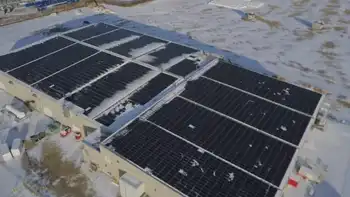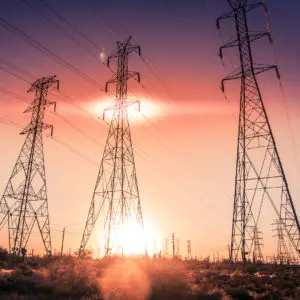Ranchers that harvest the sun
By Monterey Herald
Substation Relay Protection Training
Our customized live online or in‑person group training can be delivered to your staff at your location.

- Live Online
- 12 hours Instructor-led
- Group Training Available
On the other side, its rays are soaked up by two acres of solar panels and converted into electricity for the Big Sur resort's 40 guest rooms and other facilities.
Installation of the panels was completed about two months ago and since then they have provided about 90 percent of the resort's power.
Post Ranch, just south of Pfeiffer Big Sur State Park on Highway 1, had already built a reputation as one of the world's most ecologically sensitive hotels, so the decision to go solar was not a ploy to put the resort on the map. And while Post Ranch will possibly save money by using the new power source, it was not primarily a cost-saving move, said General Manager Dan Priano.
"We're more concerned about our carbon footprint," Priano said. "We've always been good stewards of the land. Even our Lexus vehicles are hybrids."
The inn's Lexus SUV fleet, used to transport guests between the parking lot and their rooms, is probably the resort's flashiest amenity.
Most of the resort's materials and designs exemplify the green-building philosophy, which emphasizes a low environmental impact and seamless integration into the natural landscape.
Structures are made of recycled redwood. Landscaping features drought-resistant native plants. A vegetable garden contributes to the restaurant's organic cuisine.
The rooms — which range from $550 to $2,200 a night — and other accommodations sit atop the 100-acre property, 1,200 feet above the coastline that makes up the resort's western boundary.
The solar panels are down the hill from the main facilities, closer to Highway 1. Wildlife is often seen roaming around the posts that hold the panels 3 1/2 feet to 15 feet off the ground. Most mornings, deer can be seen hanging out in the panel field, Priano said.
"Normally you see them laying out here," he said. "I think they see it as a shade room."
The 990 panels, which cover about two acres, are owned and operated by Recurrent Energy, a San Francisco-based developer and manager of solar power systems. The inn buys its electricity from Recurrent at a lower rate than what Pacific Gas & Electric Co. charges.
Recurrent Chief Executive Arno Harris said the agreement works out for both parties financially, because the inn did not have to pay for the installation and Recurrent receives monthly payments from Post Ranch.
"The thing that is great about this is working with a client that is so committed to their renewability goals," Harris said.
The solar panel field is expected to produce about 400,000 kilowatt-hours of electricity a year, which translates to savings of more than 600,000 pounds of carbon emissions that would be produced by fossil-fuel sources to power the resort.
On sunny days, when the panels produce more energy than is needed by the inn, the extra electricity is sold to PG&E, Priano said.
"Some days the meter is running backwards," he said.
The inn's Web site provides live updates of the solar array's energy output for each day, for the past month and for the past year.
Since being turned on in March, the panels have produced more than 63,000 kilowatt hours. They produced about 1,400 kilowatt hours on Tuesday, said the Web site's monitor.
In 2008, Post Ranch was ranked the eighth-best hotel in the continental U.S. and Canada by Travel and Leisure magazine. In 2003, Conde Nast Traveler magazine ranked it the best hotel in North America.
The inn's environmental stewardship has earned it a perennial spot among Trip Advisor's top 100 environmentally friendly accommodations in the world. It would meet the qualifications for Leadership in Energy and Environmental Design certification — a rating system employed by the U.S. Green Building Council — but the inn's executives have not pursued certification, Priano said.
"We just haven't done it," he said. "We just do our thing."











